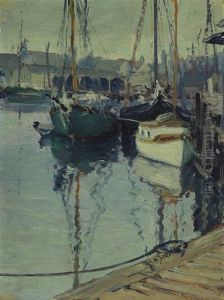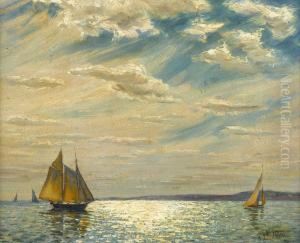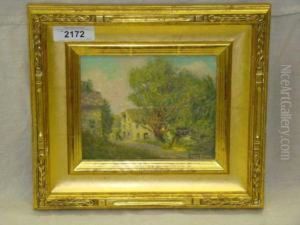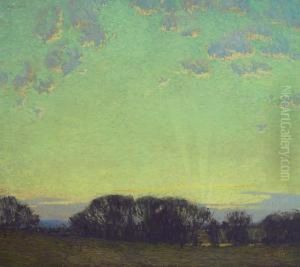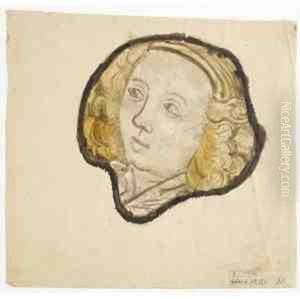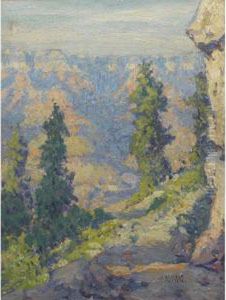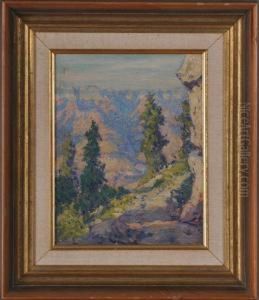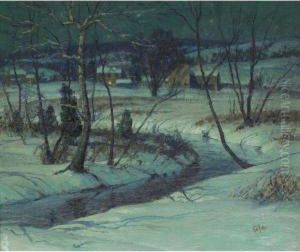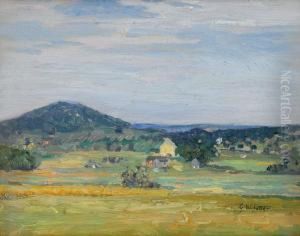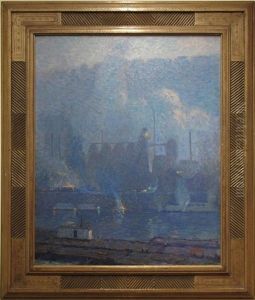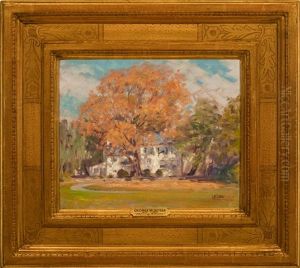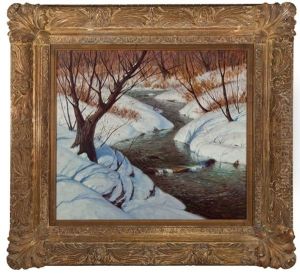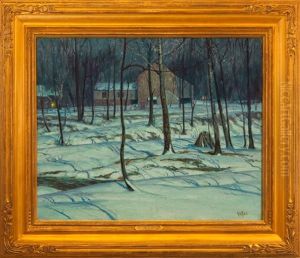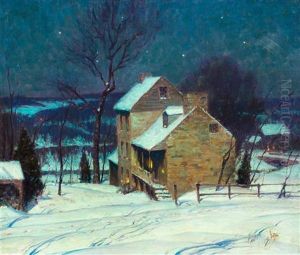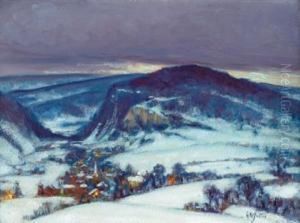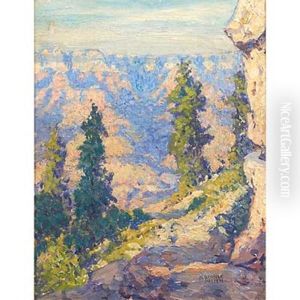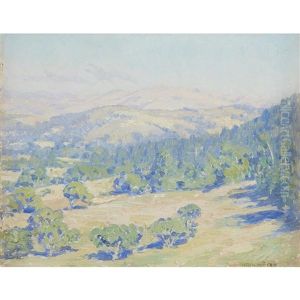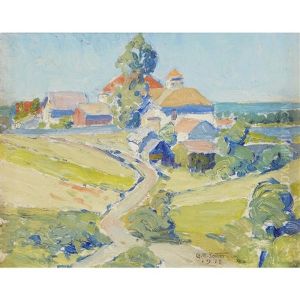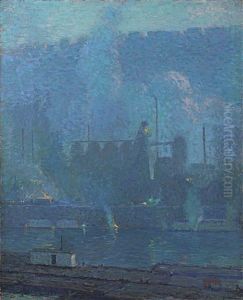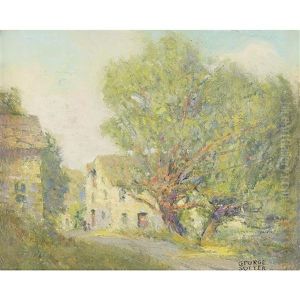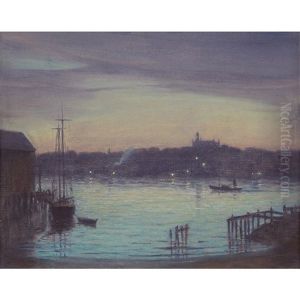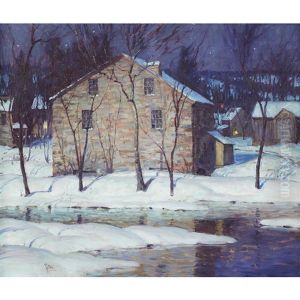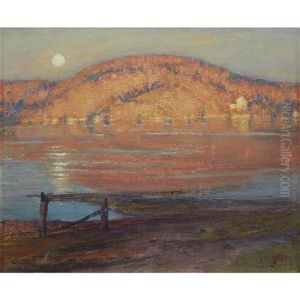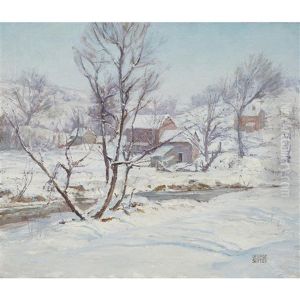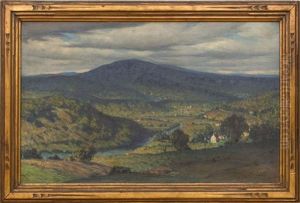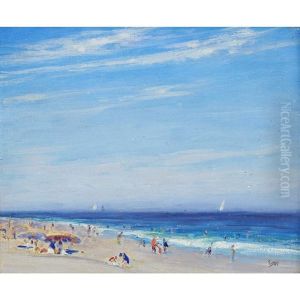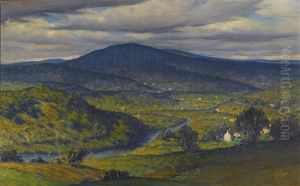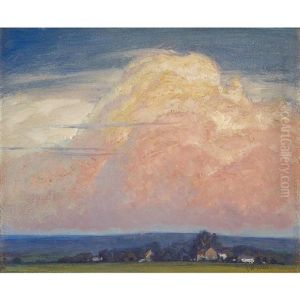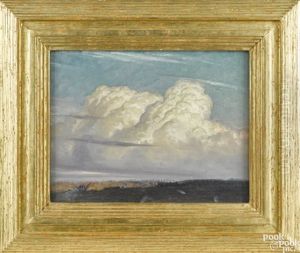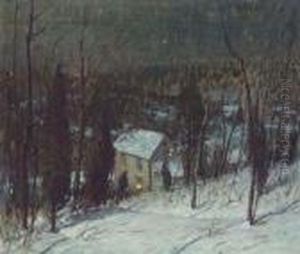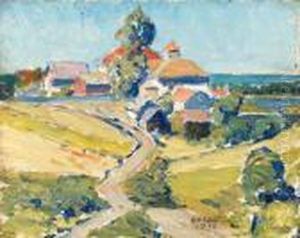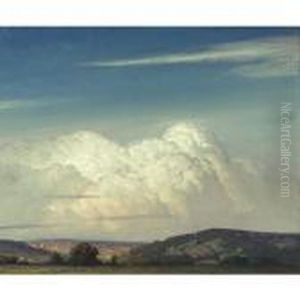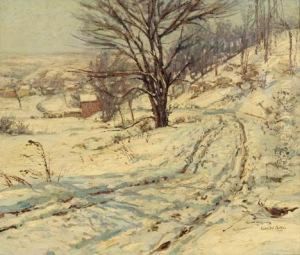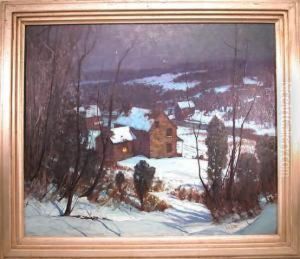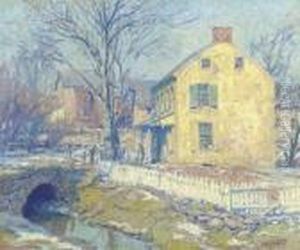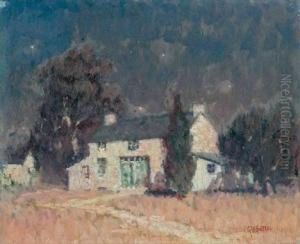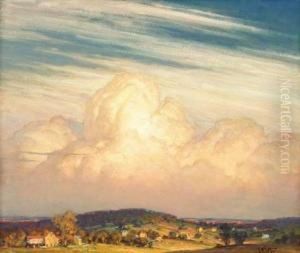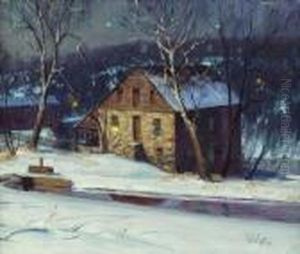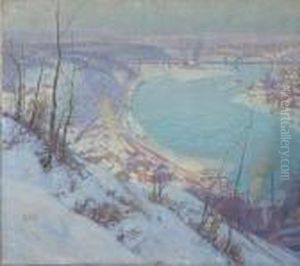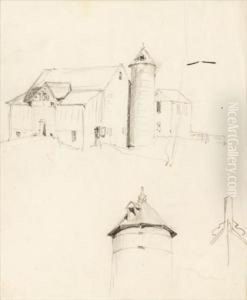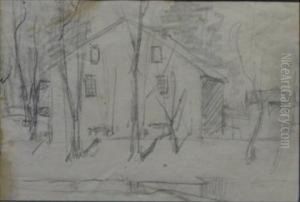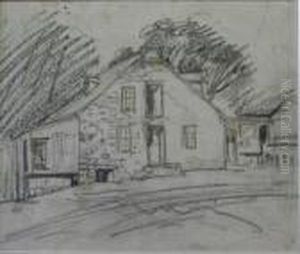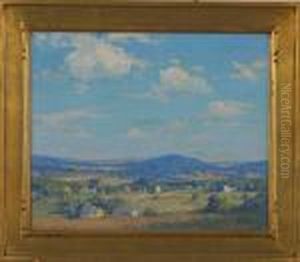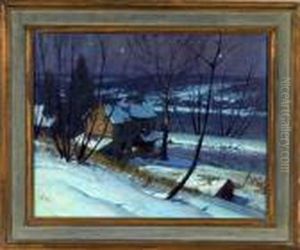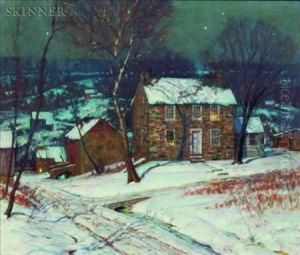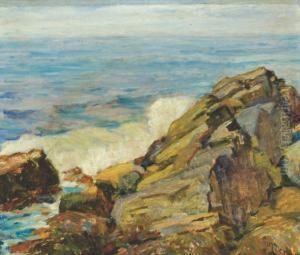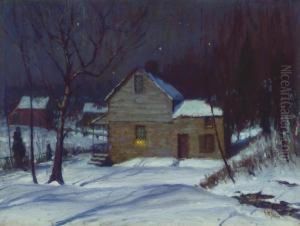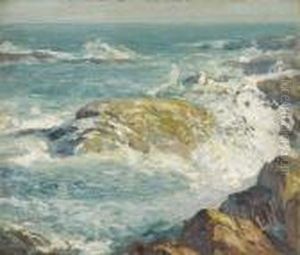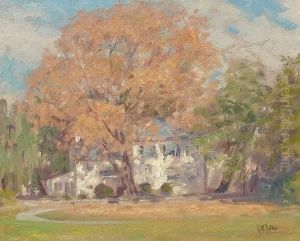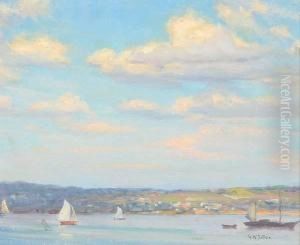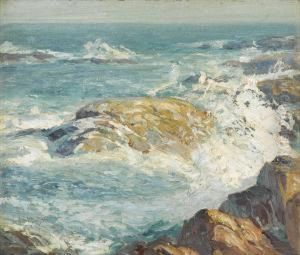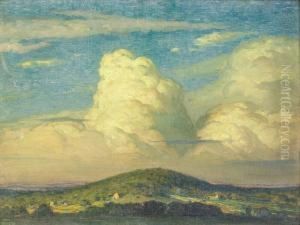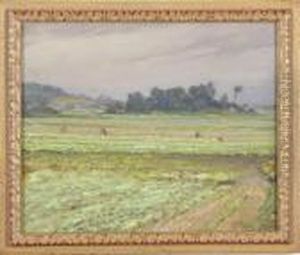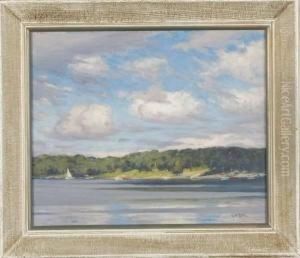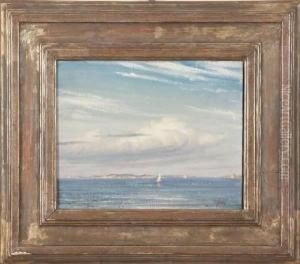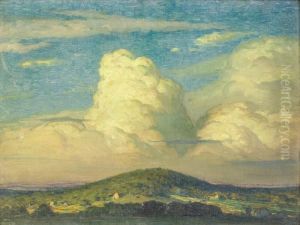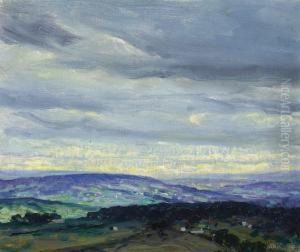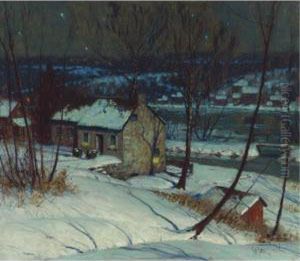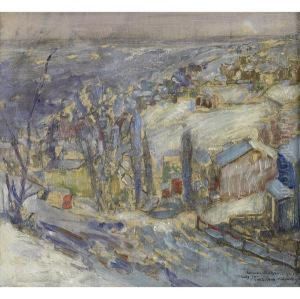George William Sotter Paintings
George William Sotter was an American painter, stained glass artist, and influential art instructor known primarily for his landscapes and particularly for his winter night scenes, which often featured snowy settings illuminated by moonlight or the warm glow of windows. Born on September 25, 1879, in Pittsburgh, Pennsylvania, Sotter initially trained at the Pennsylvania Museum and School of Industrial Art in Philadelphia and later at the Pennsylvania Academy of the Fine Arts, where he studied under Thomas Anshutz.
Sotter's early career focused on stained glass, and he worked for several years with the renowned artist and craftsman Nicola D'Ascenzo, developing his skills and contributing to various projects, including commissions for churches and other institutions. However, it was his painting that ultimately brought him significant recognition. Sotter became closely associated with the New Hope School of American Impressionism, a group of artists centered around the picturesque Pennsylvania town of New Hope. These artists were known for their plein air painting and impressionistic treatment of light and color, drawing influence from the French Impressionists.
Sotter's artwork evolved to capture the unique tranquility and beauty of rural Pennsylvania landscapes. His adept use of light, particularly in his night scenes, created a sense of atmosphere and mood that became a hallmark of his work. He often painted the rural areas around his home in Holicong, near New Hope, where he built a studio.
In addition to his painting, Sotter was a respected teacher. He taught at the Philadelphia School of Design for Women (now Moore College of Art & Design) and influenced a generation of artists with his methods and artistic philosophy. His work was exhibited widely during his lifetime, including at institutions such as the Pennsylvania Academy of the Fine Arts and the Corcoran Gallery in Washington, D.C.
George William Sotter passed away on August 27, 1953. His legacy lives on through his contributions to the American Impressionist movement and his influence on both the stained glass and painting communities of the early 20th century. Today, his works are held in several prestigious collections and continue to be admired for their luminous quality and evocative portrayal of the American landscape.
